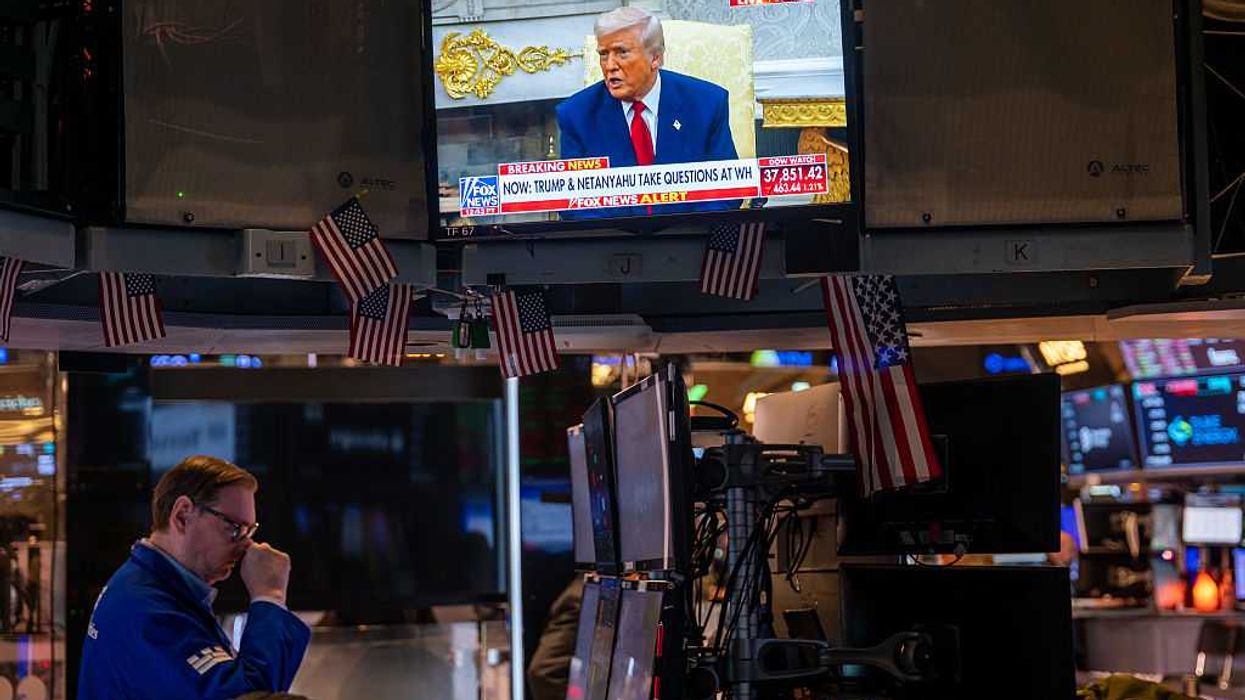President Donald Trump has championed a strong, often confrontational posture toward many nations, defining his foreign policy as “America First.” This is a new U.S. that the world is dealing with, no longer the chief architect of the multilateral world of markets, democracy, and human rights that the U.S. has been, albeit imperfectly, since World War II.
But since Trump has been in office for only five months, it’s too early to tell the ultimate impacts. However, one thing is becoming increasingly clear. The Trump administration’s posturing is causing an erosion of what is known as “soft power.” And that is starting to result in some negative economic impacts.
Soft power, compared to hard power, is the ability to influence other countries through attraction and persuasion, rather than coercion or force, based on your own country's culture, values, and policies that foster admiration and cooperation. As we learned during the Cold War, it’s a heck of a lot easier to exercise world leadership with willing participant countries. As Joseph Nye, the Harvard professor who coined the term “soft power,” put it: “Seduction is always more effective than coercion.”
The Marshall Plan: A historic example of soft power
One of America’s greatest demonstrations of soft power was the Marshall Plan. As the victor of World War II, instead of enacting vengeance and harsh punishment, the U.S. gave Europe nearly $14 billion in foreign aid (roughly $195 billion today) that would, within a decade, launch that ruined continent on a path toward unprecedented prosperity. That act was good for the U.S. too because it gave American businesses large markets for their exports on favorable terms. It was one of the keys to the unprecedented prosperity of the postwar period.
If the U.S. continues to lose soft power, it could well result in economic and geopolitical consequences that will have long-term impacts. Various studies have found that the loss of soft power can lead to negative consequences such as decreased exports, reduced foreign investment, and diminished tourism. A country's ability to attract investment and trade partners can be severely tarnished when its reputation and reliability are diminished.
Uncertain business environment
So, it’s hardly surprising that, amidst the uncertainty of Trump’s see-saw tariffs, U.S. businesses are starting to struggle. Both imports and exports were down in April but then recovered slightly in May as businesses tried to predict Trump’s meandering policy. This instability creates a challenging environment for the business climate and economic planning.
The same picture is emerging around foreign investment in the United States. One recent study shows foreign investors’ confidence in the U.S. still holding steady, but for how long? Other emerging indicators show that foreign investors may be starting to adopt a "wait and see" approach to investing in the U.S. Even as Donald Trump recently announced a trade deal with China—with vague details being worked out—others are sounding an alarm over a potential slowdown in the U.S. because the damage has already been done.
"I think there's a chance real numbers will deteriorate soon," says Jamie Dimon, CEO of JPMorgan Chase, the nation's largest bank. Alan Baer, CEO of logistics firm OL USA, says the new tariff on Chinese goods of 55% will put hundreds, if not thousands, of companies and, ultimately, jobs at risk. "Very few firms have the pricing power to absorb the tariffs or raise prices to offset the impact," Baer said. "Ultimately, the consumer pays." And that means prices will soon start going up, even as America’s soft power goes down.
Europe and Canada say no to their (suddenly) unreliable U.S. ally
Other economic impacts from the loss of soft power abound. With Donald Trump proving to be a less reliable NATO and European ally, it looks like that is going to ricochet. Almost two thirds—64%—of the military and arms imports by NATO in Europe over the last five years came from the U.S. That’s far more than even France (6.5%) or Germany (4.7%) supplied. With the dictator Vladimir Putin assaulting Europe’s borders, European leaders have gotten the message from Trump—“don’t rely on the U.S., rely on yourself.”
Lesson learned. Recently, the European Union (EU) announced its ReArm Europe plan. The plan is driven by a goal of greater strategic autonomy from the U.S. The EU intends to make available nearly $1 trillion for military investment and defense, and, unsurprisingly, the plan will prioritize European defense manufacturing and reduced reliance on the Americans. Is the Trump administration concerned? Newsweek’s headline blared that Europe's plan has “spooked the Trump administration.” Not only will this impact America’s defense industry but it will also hurt the many local economies in the U.S. where defense companies build European weapons.
Canadian Prime Minister Mark Carney also has announced, "Given the geopolitical environment ...it’s prudent and in the interest of Canada to review those options" of whether to buy U.S. military hardware.
Decline of international tourists
With international tourists being increasingly harassed and even detained by U.S. immigration, it's unsurprising that tourists are starting to stay away. That will result in another economic hit. The World Travel & Tourism Council, the global body representing the private tourism sector, issued a report titled “U.S Economy Set To Lose $12.5BN In International Traveler Spend This Year.” Travelers from Germany, the UK, and Canada have declined anywhere from 28% to 15%, with all international travel declining 22.5%. The impact will be felt beyond lost tourism dollars, due to tourism’s multiplier effect of creating jobs in communities across the country. And this can’t be attributed to a global decline in tourism—the study found that the U.S. is the only country among 184 economies forecast to see international visitor spending decline in 2025.
…and fewer international students
Another group of international visitors starting to stay away, with additional economic impacts, is university students. The Trump administration’s attacks on Harvard and other universities’ international students have put out the “school is closed” sign. In 2024, the number of international students in the U.S. reached an all-time high of 1.1 million. A big crackdown would result in a major economic hit since international students contribute 28% of tuition revenue but only 4.6% of student bodies. Moreover, international students contributed $43.8 billion to the U.S. economy and supported more than 378,000 jobs, according to one study, because students rent apartments, shop locally, and pay taxes.
The impact could well have a future ripple effect since, following graduation, 41% of foreign students remain in the U.S., including 75% of PhD students. According to the Science and Technology Policy Institute, over 20% of STEM (Science, Technology, Engineering, and Math) graduates from U.S. universities are born outside the country. Many go on to work in hospitals, health clinics, and technology companies. Depending on how widespread the Trump administration deploys its ban, or even if immigration officials just make the U.S. inhospitable, this could well result in a significant “brain drain.”
To the benefit of…China?
Ironically, the biggest beneficiary of the Trump administration’s trampling on soft power might well turn out to be China. With the U.S. no longer a reliable trade partner or an inviting place for foreign investment, tourists, students, or scientists, countries and their businesses have begun looking for new partners and places. Chinese colleges have started offering automatic acceptance to international students and researchers from Harvard and other universities. Wouldn't it be ironic if China became a global education hub and started poaching top-notch researchers and technology professionals from the U.S.?
The students of today grow up to be the leaders of tomorrow. So, geopolitically, this could greatly impact U.S. relationships with future allies, entrepreneurs, and leaders from other countries, which could bring those countries closer into China's orbit.
Conclusion
It seems puzzling and ironic—as China and other nations are rolling out the welcome mat, the Trump administration seems to be shutting its doors. Historically, America’s soft power has been its greatest asset, fostering global admiration and cooperation. That’s what made the United States the “indispensable nation.” But, now, that’s apparently being replaced by a Trump World posture of “Me First” that is turning allies into skeptics.
Steven Hill was policy director for the Center for Humane Technology, co-founder of FairVote, and political reform director at New America. You can reach him on X @StevenHill1776.




















